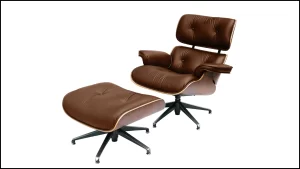Human factors and ergonomics (commonly referred to as HF&E), also known as comfort design, functional design, and systems, is the practice of designing products, systems, or processes to take proper account of the interaction between them and the people who use them. The International Ergonomics Association calls it “an interdisciplinary approach to understanding of the interactions among humans and other elements of a system, and the profession that applies theoretical principles, data and methods to design in order to optimize human well-being and overall system performance.”
They say interdisciplinary because the field has seen some contributions from numerous fields, such as psychology, engineering, biomechanics, industrial design, physiology, and anthropometry. In essence, it is the study of designing equipment, devices and processes that fit the human body and its cognitive abilities. The two terms “human factors” and “ergonomics” are essentially synonymous. HF&E is employed to fulfill the goals of occupational health and safety and productivity. It is relevant in the design of such things as safe furniture and easy-to-use interfaces to machines and equipment.
Proper ergonomic design is necessary to prevent repetitive strain injuries and other musculoskeletal disorders, which can develop over time and can lead to long-term disability. Ergonomics is concerned with the “fit” between the user, equipment and their environments. It takes account of the user’s capabilities and limitations in seeking to ensure that tasks, functions, information and the environment suit each user. To assess the fit between a person and the used technology, human factors specialists or ergonomists consider the job (activity) being done and the demands on the user; the equipment used (its size, shape, and how appropriate it is for the task), and the information used (how it is presented, accessed, and changed).
Ergonomics draws on many disciplines in its study of humans and their environments Objectives of Ergonomics Design Performance Well Being Physical ergonomics in particular is concerned with human anatomy, and some of the anthropometric, physiological and bio mechanical characteristics as they relate to physical activity. Physical ergonomic principles have been widely used in the design of both consumer and industrial products. We see it in th design of industrial equipment and more commonly in car as well as furniture design.
In the work place, when using ergonomics to increase comfort or health conscious designs like proper posture support and making sure work-stations and controls are comfortably within reach, one finds there are long-term advantages: Ergonomics improves productivity The best ergonomic solutions will often improve productivity. By designing a job to allow for good posture, less exertion, fewer motions and better heights and reaches, the workstation becomes more efficient. Ergonomics improves quality Poor ergonomics leads to frustrated and fatigued workers that don’t do their best work. When the job task is too physically taxing on the worker, they may not perform their job like they were trained. For example, an employee might not fasten a screw tight enough due to a high force requirement which could create a product quality issue.
Ergonomics improves employee engagement Employees notice when the company is putting forth their best efforts to ensure their health and safety. If an employee does not experience fatigue and discomfort during their workday, it can reduce turnover, decrease absenteeism, improve morale and increase employee involvement. Ergonomics creates a better safety culture Ergonomics shows your company’s commitment to safety and health as a core value. The cumulative effect of the previous four benefits of ergonomics is a stronger safety culture for your company. Healthy employees are your most valuable asset; creating and fostering the safety & health culture at your company will lead to better human performance for your organization. In architecture in the last few decades, considerations have been put towards ergonomic approach in making spaces accessible for people with physical disabilities and visual impairment. There is more that can be done within the field locally though, especially with internal architecture.









